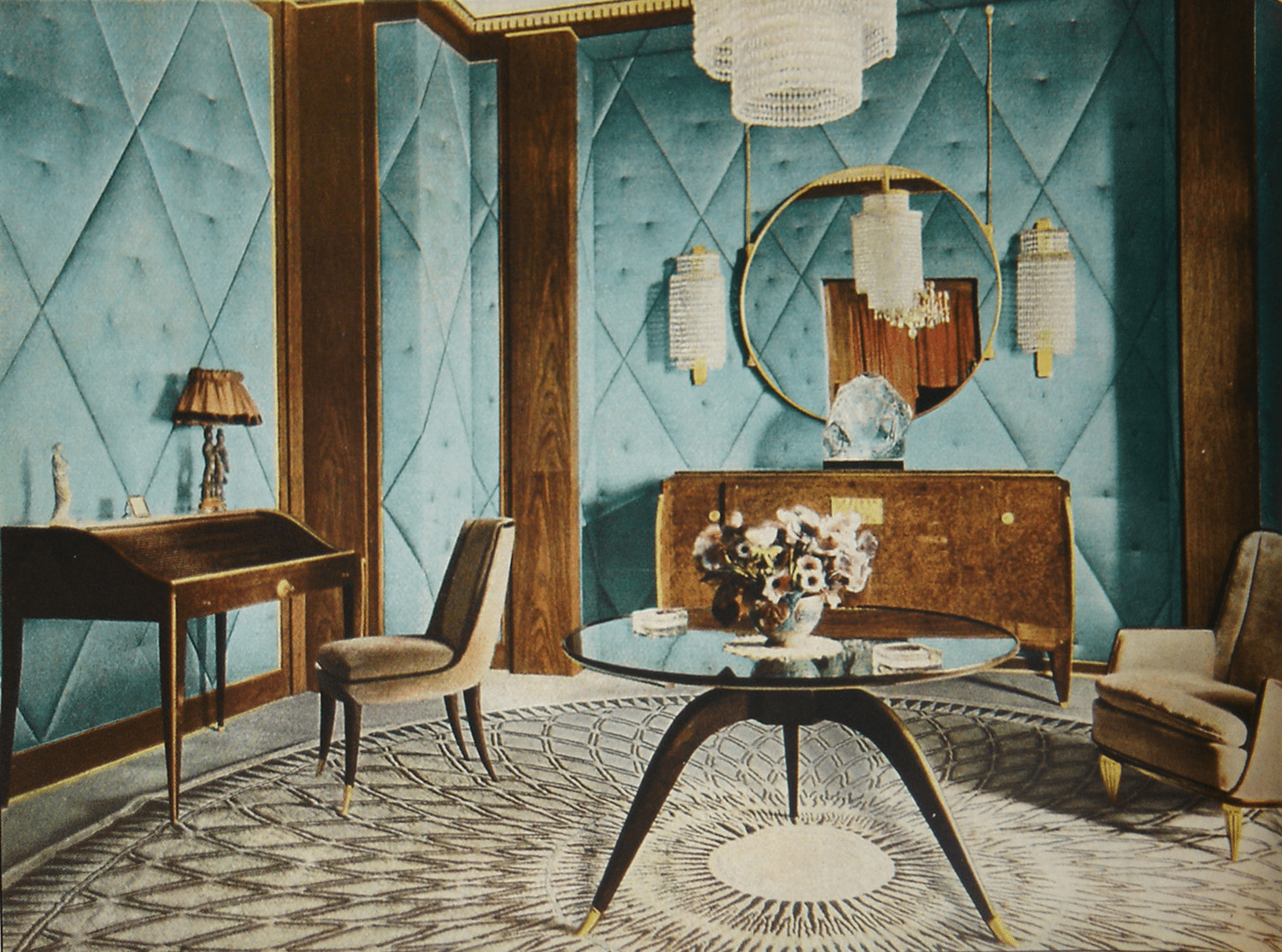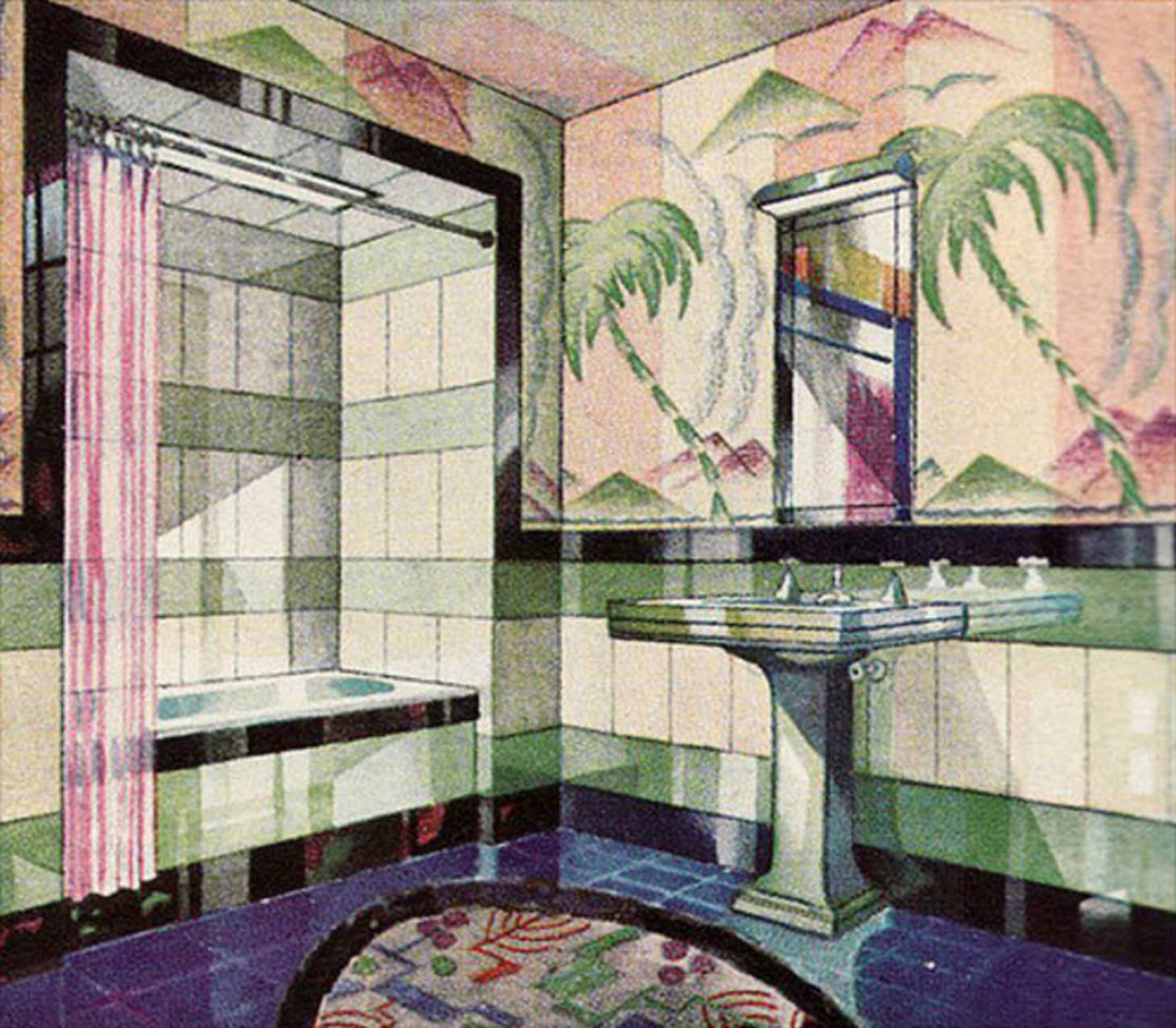The Essence of Art Deco in Bathroom Design: Vintage Art Deco Bathroom

Art Deco, a design movement that flourished in the 1920s and 1930s, is known for its bold geometric patterns, luxurious materials, and sophisticated aesthetic. Its influence continues to inspire modern design, particularly in bathroom spaces.
Geometric Patterns and Bold Colors
Geometric patterns are a hallmark of Art Deco design. These patterns, often characterized by sharp lines, geometric shapes, and repeating motifs, create a sense of rhythm and movement. Common geometric patterns found in Art Deco bathrooms include sunbursts, zigzags, chevrons, and fan-shaped designs.
These patterns are often incorporated into bathroom tiles, wallpaper, and decorative elements. For example, geometric tiles can be used to create a striking focal point on a bathroom floor or wall. Bold colors are another essential element of Art Deco. Rich, saturated colors like emerald green, sapphire blue, ruby red, and gold were popular choices. These colors are often used in combination with black and white to create a dramatic and luxurious feel.
Luxurious Materials
Art Deco design embraced luxurious materials like marble, onyx, and polished brass. These materials were used to create a sense of opulence and sophistication.
Marble, for instance, was often used for countertops, sinks, and bathtubs, adding a touch of elegance and durability. Onyx, known for its translucent beauty and intricate patterns, was used for backsplashes and decorative accents. Polished brass was used for fixtures, towel bars, and other hardware, adding a touch of shine and glamour.
Examples of Art Deco Elements in Bathrooms, Vintage art deco bathroom
Art Deco elements can be incorporated into a bathroom in various ways, creating a sense of sophistication and glamour.
Geometric Tiles
Geometric tiles are a popular way to introduce Art Deco patterns into a bathroom. These tiles can be used to create a striking focal point on a bathroom floor or wall. For example, black and white geometric tiles can be used to create a checkerboard pattern on the floor, while colorful geometric tiles can be used to create a vibrant accent wall.
Mirrored Surfaces
Mirrored surfaces are another common Art Deco element. Mirrors were often used to create a sense of space and light in Art Deco interiors. In a bathroom, a large mirrored wall can make the space feel larger and brighter. Mirrored vanity cabinets can also add a touch of glamour.
Decorative Lighting
Decorative lighting is an essential element of Art Deco design. Chandeliers, sconces, and pendant lights with geometric shapes and luxurious materials can add a touch of elegance and sophistication to a bathroom. For example, a crystal chandelier can add a touch of sparkle to the space, while a brass pendant light can add a touch of warmth.
Vintage Art Deco Bathroom Features
The vintage Art Deco bathroom is a testament to the era’s fascination with geometric patterns, luxurious materials, and a sense of grandeur. From its iconic fixtures to its distinctive color palette, every element in an Art Deco bathroom reflects the style’s unique aesthetic.
Iconic Art Deco Bathroom Fixtures
The fixtures in a vintage Art Deco bathroom are as striking as they are functional.
- Clawfoot Tubs: These freestanding tubs, often made of porcelain or cast iron, were a staple of Art Deco design. Their elegant curves and intricate detailing, like lion’s paw feet, added a touch of sophistication to the bathroom.
- Pedestal Sinks: The pedestal sink was another popular choice for Art Deco bathrooms. Its sleek, minimalist design, often featuring a marble or ceramic basin, complemented the era’s focus on streamlined forms.
- Ornate Faucets: Art Deco faucets were characterized by their intricate detailing and geometric patterns. They often featured brass or chrome finishes, adding a touch of luxury to the bathroom.
Materials Used in Vintage Art Deco Bathrooms
Art Deco bathrooms often incorporated luxurious and durable materials, reflecting the era’s emphasis on quality craftsmanship.
- Marble: Marble was a popular choice for floors, walls, and countertops. Its elegant veining and natural beauty added a touch of sophistication to the bathroom.
- Brass: Brass was frequently used for fixtures, accents, and decorative elements. Its warm, golden hue complemented the rich jewel tones often found in Art Deco bathrooms.
- Chrome: Chrome was another popular choice for fixtures and accents. Its sleek, reflective surface added a touch of modernity to the bathroom.
Art Deco Color Palettes
Art Deco bathrooms were known for their bold and dramatic color palettes.
- Rich Jewel Tones: Emerald green, sapphire blue, ruby red, and amethyst purple were all popular choices. These colors added a sense of depth and luxury to the bathroom.
- Metallic Accents: Gold, silver, and bronze were frequently used for fixtures, accents, and decorative elements. These metallic accents added a touch of glamour and sophistication to the bathroom.
- Black and White Contrasts: Black and white were often used to create a dramatic and elegant effect. These contrasting colors were often used for floor tiles, walls, and fixtures.
Modern Interpretations of Vintage Art Deco

The timeless elegance of Art Deco design has experienced a resurgence in contemporary interiors, finding a fresh expression in modern bathrooms. This fusion of vintage charm and contemporary sensibilities creates a captivating aesthetic that is both sophisticated and inviting.
Blending Vintage Art Deco with Modern Aesthetics
The integration of vintage Art Deco elements into a modern bathroom requires careful consideration of design principles and materials. The goal is to achieve a harmonious balance between the classic and contemporary, avoiding an overly retro or dated feel.
- Color Palette: Art Deco is renowned for its bold color schemes, often featuring rich jewel tones like emerald green, sapphire blue, ruby red, and amber yellow. These vibrant hues can be incorporated as accents, such as in a statement vanity, a patterned tile backsplash, or decorative accessories. However, to prevent the bathroom from feeling overwhelming, it’s essential to balance these bold colors with neutral tones like white, cream, or gray.
- Geometric Patterns: Geometric patterns, a defining feature of Art Deco, add a touch of visual interest and sophistication. These patterns can be incorporated through the use of patterned tiles, wallpaper, or even fabric accents. To achieve a modern feel, opt for clean lines and simple geometric motifs, such as chevrons, zigzags, or sunbursts.
- Materials: Art Deco embraced luxurious materials like marble, brass, and chrome. These materials can be incorporated into a modern bathroom by using them for countertops, faucets, showerheads, and accessories. However, to prevent the bathroom from feeling too traditional, consider using modern finishes like brushed nickel or matte black for the fixtures.
- Lighting: Lighting plays a crucial role in creating the desired ambiance. Art Deco lighting often featured geometric shapes, crystal accents, and dramatic silhouettes. Modern interpretations of this style can incorporate pendant lights with geometric designs, sconces with brass accents, or even a statement chandelier with crystal elements.
- Fixtures: Art Deco fixtures often featured sleek, streamlined designs. Modern interpretations of this style can incorporate freestanding tubs, wall-mounted vanities, and sleek, minimalist showerheads. To maintain a modern feel, opt for fixtures with clean lines and simple designs.
Modern Bathroom Design with Vintage Art Deco Elements
Consider a bathroom with a white marble countertop and backsplash. The backsplash features a subtle geometric pattern in a soft gray, adding visual interest without being overwhelming. The vanity itself is a modern, minimalist design with brushed nickel hardware. A freestanding bathtub sits in the center of the room, featuring sleek chrome fixtures and a dramatic, geometric-shaped showerhead. The lighting consists of a pendant light with a geometric design in brass, adding a touch of vintage glamour. The overall effect is a sophisticated and inviting space that blends vintage charm with contemporary elegance.
A vintage Art Deco bathroom is a timeless design choice, with its geometric lines and luxurious feel. If you’re looking to incorporate a touch of this elegance, consider a bold statement piece like a 24 blue bathroom vanity.
The deep blue hue complements the rich tones and metallic accents typical of Art Deco, while the vanity’s design can be customized to match the overall aesthetic of your bathroom.
A vintage art deco bathroom can be incredibly glamorous, with its geometric shapes and luxurious materials. If you’re aiming for that look, a large corner bathroom vanity can be a perfect addition. A large corner bathroom vanity can add a touch of elegance and functionality to your space, while also maximizing your bathroom’s layout.
And with the right finishes, you can create a truly stunning vintage art deco bathroom.
